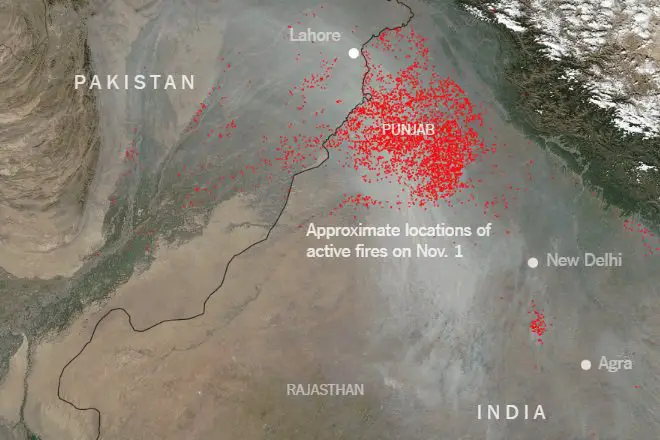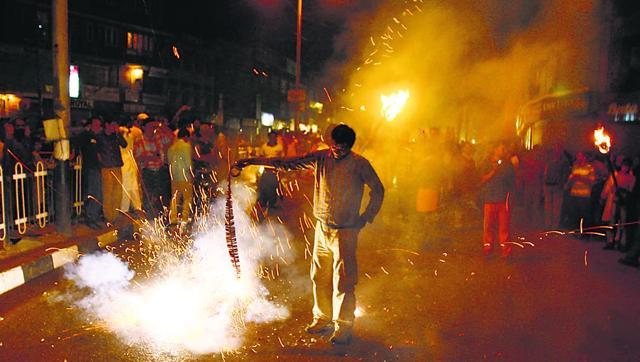Air Purifiers are a hot topic these days thanks to the dangerous levels of air pollution in Indian cities. Due to a multitude of factors, air pollution has not been under control across some of the busiest parts of India. It can lead to many health problems like asthma and other respiratory issues.
Air Pollution
Air Pollution is a mixture of natural and man made substances in the air we breathe. It occurs when gases, dust particles, fumes or odour are introduced into the atmosphere in a way that makes it harmful to humans, animals and plant.
Causes
Crop Burning
Burning of stubble left after paddy crops is common in Northwest India. As per recent reports by NASA, Punjab and Haryana are the main contributors. Unchecked paddy stubble burning is badly affecting the states. Winds carry the smoke over north India, including the capital. Delhi’s air quality plunged from moderate to poor during this period.
Industrial Pollution
Unchecked pollution by industries is also a significant cause of air pollution. Factories pollute the air through fossil fuel emissions. When burned, fossil fuels emit harmful gases including carbon dioxide and sulfur dioxide which increase the amount of pollution in the atmosphere.
Vehicular Pollution
Vehicles also contribute to air pollution. Vehicles emit carbon monoxide, oxides of nitrogen, un-burnt hydrocarbons and particulate matter.
Crackers
Crackers are also responsible for air pollution and smog. Cracker combustion requires gunpowder which gives rise to harmful substances such as potassium carbonate, potassium sulphate and potassium sulphide.
Particles
PM 2.5
The term fine particles, or PM 2.5 refers to tiny particles or droplets in the air that are two and one half microns or less in width. The particles are so small that several thousand of them could fit on the period at the end of this sentence. Small particles can enter respiratory tract, reaching the lungs. It can cause throat and lung irritation, coughing and sneezing. It can also worsen medical conditions such as asthma and heart diseases.
PM 10
PM 10 refers to particles which are 10 microns or less in diameter. It includes inhalable particles that are small enough to penetrate the thoracic region of the respiratory system. They can lead to heart attacks, bronchitis, asthma, reduced lung development and more.
Other Dust Particles
Dust and smoke are the two major components of particulate matter. Car emissions, chemicals from factories, dust, pollen and mold spores may be suspended as particles. Construction, unpaved roads, demolition of building and industries are the major sources of dust.
How does an Air Purifier Work?
An air purifier works in a very simple manner – it sucks the air inside and passes it through the filters. When the air reaches the filters, the contaminants like PM2.5 and others are separated from the air. The clean air is then released back outside.
Do You Need An Air Purifier?
Air Purifiers used to be a lifestyle device. Until now, that is. With increasing pollution causing a range of health issues, you may end up needing an air purifier. To keep it simple, if you think pollution is affecting your health, or if you think your home or office is affected by unhealthy air and smoke, you may want to invest in an air purifier.
What Should I Look For In An Air Purifier? – FAQ
Question: What is a HEPA Filter?
Answer: HEPA stands for High Efficiency Particulate Air. HEPA filters are made of layers of fibres. HEPA filter traps air contaminants. Depending on the size of the particle, this can happen in four different ways: Inertial Impaction, Diffusion, Interception, or Sieving.
Question: What is a Carbon Activated Filter?
Answer: Carbon activated filters use activated charcoal to remove contaminants and impurities, using chemical adsorption. Adsorption is a process where organic compounds in the air react chemically with the activated carbon, which causes them to stick to the filter.
Question: What is a Pre Filter?
Answer: Some units use a pre filter to capture large airborne particles before they reach the HEPA filter. This extends the life of the HEPA filter and saves your money.
Question: How much noise does an air purifier make?
Answer: Air purifiers do make some noise, as the process of sucking in air and releasing it is not really discreet. When buying an air purifier, make sure to check the noise level (mentioned in decibels – dB) on the product page.
Question: What is the coverage area?
To choose the right size air purifier for your needs, consider the square footage of the room you want to purify. Make sure the square footage listed for the air purifier is about the same or slightly greater than the square footage of the room where you intend to use it.
Question: Cost of Replacement filters
Answer: If you use the air purifier regularly, you will have to replace the filters after 6 months. Generally, filters cost around Rs. 1500-2000. If the replacement filter exceeds Rs. 2,000, we recommend you not to buy such a filter.
Air Purifier Certifications
AHAM
Association of Home Appliance Manufacturers is an organization that verifies the volume, energy and performance, of many common household appliances. AHAM tests air purifiers for suggested room size and the reduction of three common household particulates: tobacco smoke, dust and pollen, commonly referred to as the Clean Air Delivery Rate (CADR).
ECARF
The European Centre for Allergy Research Foundation provides Seal of Quality to air purifiers that certifies the air purifiers as allergy friendly that are able to demonstrate that they achieve a significant reduction in the level of pollen, bacteria and mould spores in the air.
Where Should I Buy An Air Purifier From?
You can buy air purifiers from most of the e-commerce websites and even offline retailers. Companies like Xiaomi, Philips, Kent, Aeroguard, Daikin, Panasonic, etc are selling their air purifiers online.
Xiaomi recently launched the Mi Air purifier 2 in India for Rs. 9,999. You can buy other good quality filters from reputed companies on Amazon.










